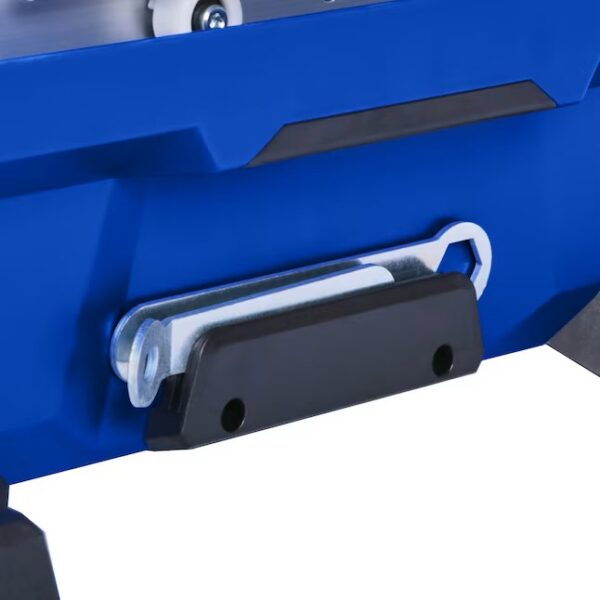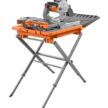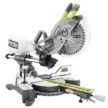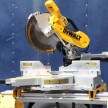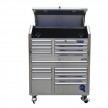Kobalt 7-inch Sliding Table Tile Saw
Kobalt 7-inch Sliding Table Tile Saw
Here at Tool Box Buzz and A Concord Carpenter we’ve reviewed several top-mount tile saws, but this Kobalt 7-inch 6-Amp Wet Tabletop Sliding Table Corded Tile Saw (model KWS B72-06) is the first bottom-mount tile saw that we’ve looked at. We’re glad to correct this omission because bottom-mount tile saws have real advantages in many applications.
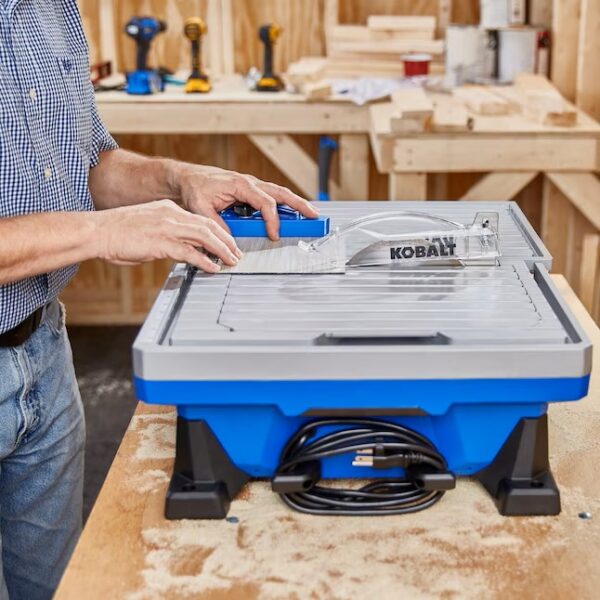
Do Pros Use Bottom-Mount Tile Saws?
It’s true that top-mount saws are generally more powerful and have greater flexibility in making beveled cuts. For these reasons, they are often a choice of tiling pros. But bottom-mount tile saws are lighter, smaller, easier to set up, easier to move, and offer plenty of power for the most common tiles that are installed in residences and many commercial buildings. In fact, I know of one large commercial office building to which a pallet of under-mount tile saws was delivered during its construction for the tiling sub’s crew to use. So yes, pros do use them.
In fact, bigger isn’t always better. We’ve seen the recognition of this fact over the last several years with the introduction of compact versions of many tools, often with less, but more than sufficient, power. Tradies are realizing that “right-sized” is better than “most powerful”.
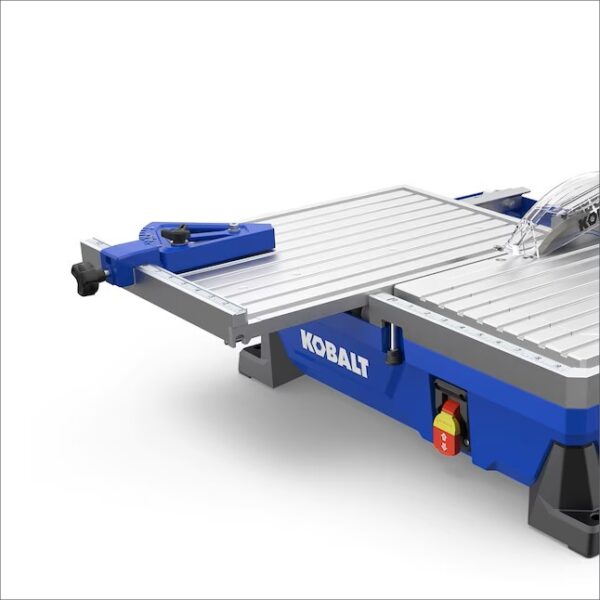
Why This Particular Saw?
This saw, the Kobalt 7-inch 6-Amp Wet Tabletop Sliding Table Corded Tile Saw, is one of three corded wet under-mount tile saws that Kobalt offers, and they also offer a cordless model. We wanted to look at this particular model because it features a sliding table and is corded.
A sliding table makes making cuts a little easier, in part because it removes the operator’s inconsistencies in moving the tile past the blade. But this advantage comes at the cost of having to ensure the alignment of three components (blade, fence, and table) rather than the two (blade and fence) that a fixed-table saw requires. However, this “cost” is usually negligible in practice.
In cases when the workpiece is moved to the tool (such as with a table saw), rather than the tool moving to the workpiece (as with an impact driver), I usually prefer a corded tool so that I don’t have to even think about battery charging and management. Few tiling jobs occur in unpowered environments; hardscaping jobs, on the other hand, may benefit from a cordless saw.
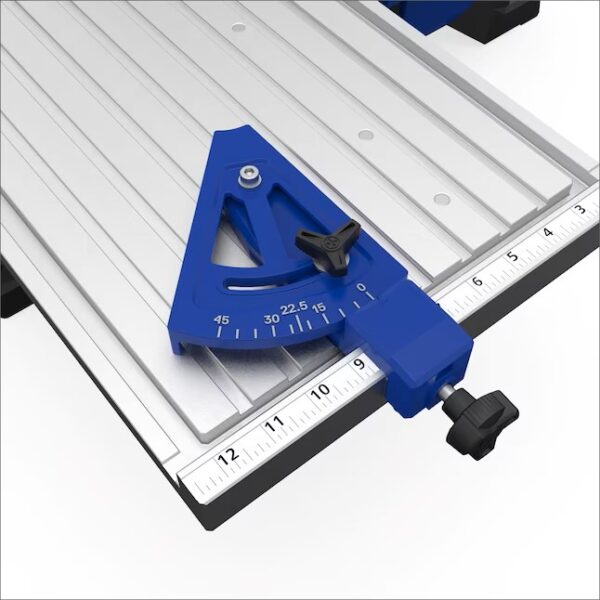
The Specs
- Smooth sliding table that delivers 18-in of rip cutting capacity, cuts 12-in by 12-in tile diagonally with a maximum depth of cut of 1-1/4-in
- Cuts ceramic, porcelain, natural stone, pavers and a variety of tile
- Clear blade guard
- Removable rear extension tray minimizes water over-spray
- Table tilts for 22.5 and 45-degree bevel cuts
- Combined miter gauge adjusts for cuts up to 45 degrees
- Aluminum die cast table
- Includes 7-in blade
- 6-amp/1 hp /5200 rpm motor
- 5/8-inch arbor
- 28 pounds
- $230 at Lowes
Setup
The Kobalt 7-inch 6-Amp Wet Tabletop Sliding Table Corded Tile Saw set up quickly in a few steps with no surprises. The instructions were clear, and I only had to think for a few seconds about a particular instruction a couple of times.
The unit is light enough to easily pick up and move as one piece, which is a real convenience, but it doesn’t feel flimsy at all.
The factory blade installed on the arbor absolutely squarely. There squareness of the sliding table to the blade can be adjusted slightly. The saw came acceptably square for small format tiles, but I wanted it to be as perfect as possible throughout the entire travel length of the table, so I made the prescribed minute adjustments to the right-hand rail – the one that engages the grooved wheels on the underside of the sliding table. To do that, you just back off the screws holding the rail to the frame and adjust slightly. After I did that the table was nice and square to the blade.
The Kobalt 7-inch 6-Amp Wet Tabletop Sliding Table Corded Tile Saw is like almost all sliding table saws in that it is most accurate when all the rollers on the underside of the sliding table are in contact with the rail that they ride on. As the table is pulled further and further to the front of the saw (towards the operator), and some rollers disengage from the rail, side-to-side play is introduced to the table. Tilers learn to watch out for this, and many of them will strike a line on a tile to be cut, and then cut to that line, with the sliding table and fence as mere conveniences…but the line is what they watch and cut to.
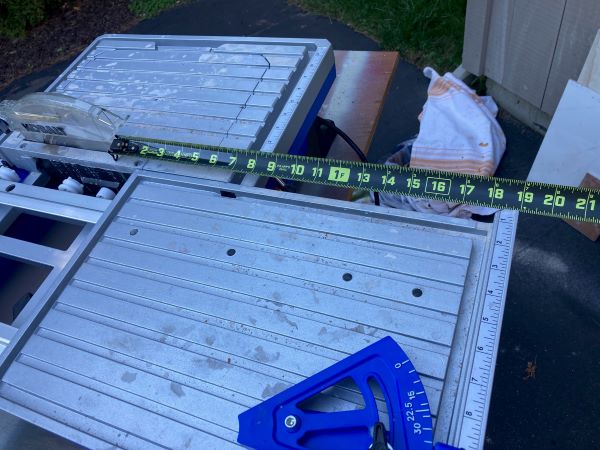
Cutting Speed
The Kobalt 7-inch 6-Amp Wet Tabletop Sliding Table Corded Tile Saw would probably be used mostly for ceramic and porcelain tile, so I stuck to them.
When I’m trying out a wood-cutting saw, I judge its power by whether or not the saw will let me cut different materials as fast as I can control the workpiece and hold a line, since that’s all the saw needs to do and is a reasonable performance expectation. Tile saws, as they cut much harder and dense material, usually cut more slowly than that, and expectations are different. This saw, with its 6-amp, 5200 rpm motor, cut various quarter-inch ceramic and porcelain tiles at about half the speed at which I could control the cut. This is right in line with what I expected from a tile saw of this amperage. While a higher-amperage tile saw would cut faster (but still not as fast as I could hold a line), I don’t see this saw’s cut rate as any kind of disadvantage for its intended applications. For a DIYer, cut rate isn’t all that important – a few extra minutes a day are irrelevant. For a pro, you can still cut faster with this saw than your partner can butter, set, and level the tiles you’re cutting for him or her.

Cut Quality
The cut quality of any saw is more a function of the blade than anything. With wood-cutting saws, unless we are making rough cuts in soft wood, we know that we’re going to have to upgrade the factory-supplied blade if we want decent cuts. Tile saws are the same. The factory-supplied blade on the Kobalt 7-inch 6-Amp Wet Tabletop Sliding Table Corded Tile Saw is, as with any saw, arguably its weakest link. Cutting the tile face up, it cut (type 3) porcelain and ceramic tile with some just noticeable chipping along the cut line, and it created a chip at the end of the cut. I dressed the factory blade with a diamond blade dressing stone, and these problems got noticeably better. I then upgraded to a highly-rated porcelain blade (blades for the harder porcelain will cut ceramic tile easily, but not vice-versa). Cutting face-up, the problem still persisted, albeit only very slightly.
So what’s going on here? The blade is spinning at a high speed, the blade is square to the table, and I’m using a very good blade. It has to do with the direction of the spinning blade. With a top-mount tile saw, the top of the blade is spinning towards you and down onto the tile surface, pushing removed material back into the open space of the cut. With a bottom-mount saw like this, the top of the blade is spinning towards you and into the uncut section of your cut path, but pushing material towards you and against a barrier of uncut material. The manual for this saw understands that this is a potential issue, and suggests eliminating the issue by making a small back cut first. Alternatively, cutting the tile face down all but eliminates this issue, and tillers have long known that cutting face down when using under-mount saws is a good idea. Once I did either of these, cut quality was fine. Simple enough.
To expand on an earlier point, the fact that I upgraded this saw’s blade is completely to be expected, especially on an inexpensive saw. In fact, tile (and masonry) blades are a bit of a science all in themselves. Porcelain, ceramic, glass, and other materials not only have blades designed specifically for that material, but there are different blade constructions, too. Often a blade that’s optimized for one material won’t do well on another. You have to expect to get the right blade for your application.
Water Containment
The blade guard has to be in place in order to contain the water that the blade picks up from the reservoir, and “rain” the water down on the blade while it’s cutting tile. This guard is clear, as it needs to be, so that you can see the workpiece/blade interface. Blade wetting works well on this tool. Although I don’t know that riving knives are necessary on tile saws, the riving knife is what holds the guard — which is necessary to keep the blade wet — in place. The riving knife on this saw is easily adjusted to be in line with the blade so it doesn’t really present any negatives.
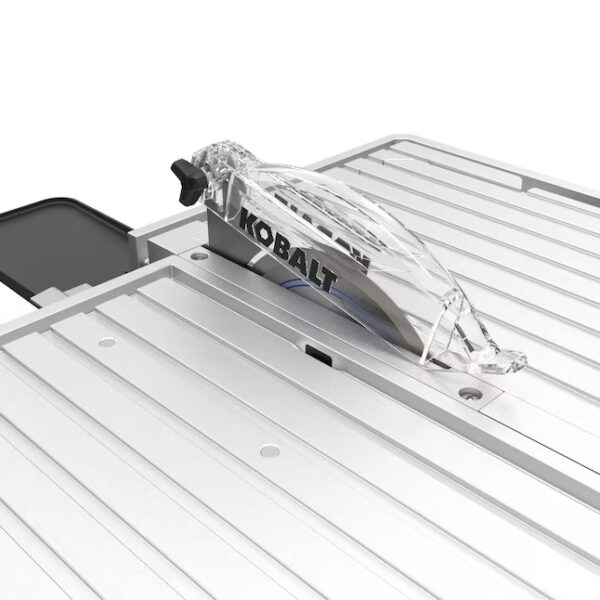
Water is nicely contained with the Kobalt 7-inch 6-Amp Wet Tabletop Sliding Table Corded Tile Saw. Only a very, very little is splashed onto the table (see the grayish spots in the image below), and the rear splash guard contains most of that water well. I’ve read that some pros have used this saw in a finished room; I thought that was mighty brave of them, but having now used this saw I can see that it’d be possible with some precautions. (Still, I’d just as soon not…)

Bevel Cuts
The non-sliding table of this saw tilts up in order to make bevel cuts. There is a stand-off underneath the tilting section with pre-set notches to hold the table at either 45-degrees or 22.5-degrees. Those were both calibrated correctly. If you wanted a different angle, it would be simple enough to clamp a stand-off underneath the tilting section.
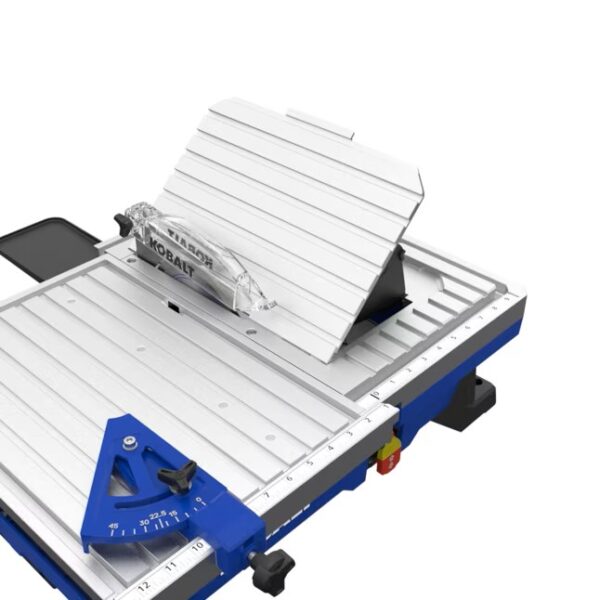
Making bevel cuts is a little trickier than straight or miter cuts because you have to push the tile along the fixed, tilted, aluminum table section, and through the blade. Since you aren’t using a sliding table, the friction you are encountering is naturally greater. Also, it’s easy for a tile to wander “up” the tilted section. For this reason bevel cuts are best done by following a line and taking your time. This is just an inherent characteristic of using a fixed tilted table.

The other thing to note about making bevel cuts with a section of the table up is that the water is nowhere near as contained. Finally, I got very a very clean cut finish with bevel cuts when the tile was facing up, and less so when it was facing down. This is in contrast to straight cuts on a flat table.
Bottom Line
Kobalt 7-inch 6-Amp Wet Tabletop Sliding Table Corded Tile Saw is a very good fit for a DIYer, and a good fit for some pro applications. In fact, it’s a good fit for all types of DIYers and contractors. The superb water containment makes it useful even in spaces where most tile saws fear to go. With a blade exactly matched to your materials and proper cutting technique, this saw can do pretty much everything that a pro model top-mount saw can, with the exception of plunge cuts. And at a fraction of the cost, size, and weight.
The greatest limitation of this saw is its 18-inch rip capacity. That won’t be an issue for most jobs, but if you are setting very large format tiles, you may have to upgrade to a larger saw (and Kolbalt makes them, too).
All that said, this is definitely the saw I’m pulling out for the majority of the work I do.



